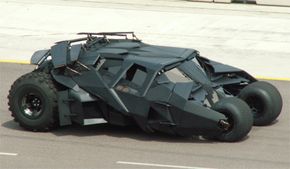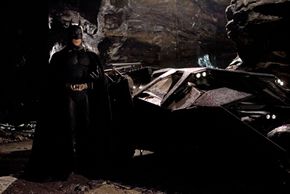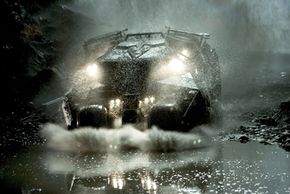Whether you have seen the movie "Batman Begins" or not, you have probably seen the Batmobile. It is shaped like a spaceship -- a spaceship that has had tires grafted onto it to make it street legal. The Batmobile used in "Batman Begins" is an icon for the movie and acts like a giant rolling advertisement for the film.
The Batmobile is real. Every single time you see the Batmobile in the movie, you are seeing a real, physical object, not a computer-generated graphic. Whether it is driving on city streets at 100 mph, landing in the Batcave or pulling up to the scene of a crime, what you're looking at is a real car. When the Batmobile flies 30 feet through the waterfall to land in the Batcave, what's landing is a real, 5,000-pound vehicle. The Batmobile is so real that it actually served as the pace car for a major NASCAR race held in June 2005.
Advertisement
And yet, the Batmobile is an illusion. Like so many other Hollywood props, the Batmobile that you see in the movie does not exist at all.
How can that be? How can something be so real that it can serve as a pace car but also be so illusory that it doesn't actually exist? In this article, we will talk with Nathan Crowley -- the man who designed the Batmobile and brought it to life in "Batman Begins" -- to find out what's going on.
Advertisement







